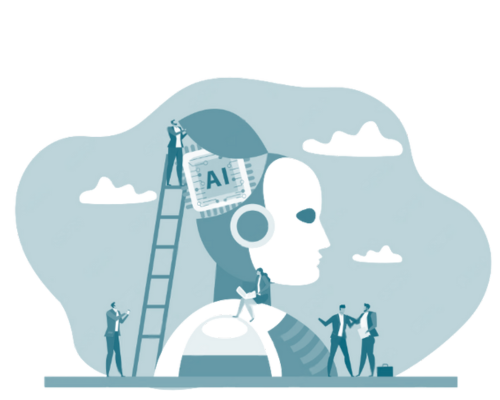The Coffee Machine That Refused to Brew
A European telecom company proudly deployed an “AI assistant” to automate IT ticket routing. It worked—until it didn’t.
One morning, the bot stopped assigning tickets. The screen layout had changed slightly, and the bot couldn’t recognize where to click.
Everything halted.
The system had no idea what went wrong, and worse—it had no idea how to recover.
That’s not Agentic AI. That’s a traditional automation with a marketing upgrade.
Now imagine a system that noticed the UI change, re-mapped the interface, tested its new approach on dummy tickets, and sent a confidence report to the IT admin—without anyone lifting a finger.
That’s Agentic AI.
But what exactly is Agentic AI, and what is it not?
We’ll demystify the term in this blog.
First, What Is Agentic AI?
Agentic AI refers to systems that can operate autonomously with purposeful, goal-directed behaviour. It’s not just about executing tasks—it’s about understanding context, making decisions, and adapting when plans fail.
Think of it as the difference between:
A hammer that hits when you say “hit”
vs.
A contractor who plans your kitchen remodel, chooses tools, adapts when materials are late, and finishes the job.
Characteristics of Agentic AI
Trait | Description |
Autonomy | Can act independently within defined boundaries |
Goal-orientation | Works toward high-level objectives, not just task execution |
Context-awareness | Understands its environment and reacts to changes |
Planning & Sequencing | Can break down goals into sub-goals and actions |
Feedback loop | Learns from failure, adapts strategy, and improves over time |
The Finance Manager That (Finally) Got It Right
Nina is a finance manager, drowning in weekly reporting. Every Friday, she ran a 15-step process: downloading data from systems, cleaning Excel sheets, applying formulas, creating charts, formatting the PowerPoint—and emailing it to her VP.
They had automated the process with RPA. It helped, until column names changed. Or formulas were updated. Or someone forgot to approve the access request.
Then came “Agent Nina”—a system designed using an agentic architecture.
It observed Nina’s workflow, understood her intent (not just steps), and built adaptive decision chains. When data was missing, it requested approvals. When formats changed, it tested alternative formulas. It even suggested sharper narratives for executive review.
Although she was a finance manager, she was performing basic operator work. The agentic AI freed up her bandwidth, enabling her to become a strategist. This brought dynamism and evolution to her role.
What Agentic AI Isn’t
Now that we’ve seen what it can be, let’s talk about what it definitely is not.
It’s Not Traditional Automation
If your system follows fixed steps and breaks every time something changes—it’s not agentic. No matter how fancy the UI or how many “AI” buzzwords you slap on it.
It’s Not Just a Chatbot with Memory
Having a chatbot remember your name doesn’t make it agentic. Memory isn’t planning. Agentic AI can act in the world—booking, escalating, testing, retrying, and reporting dynamically.
It’s Not an LLM with a Wrapper
Just because your large language model can answer questions with style doesn’t mean it’s an autonomous agent. Agentic AI involves goal setting, tool use, task orchestration, and feedback loops—not just text generation.
The Governance Imperative: Autonomy ≠ Anarchy
The promise of Agentic AI also comes with responsibility.
We’re not just creating smarter systems. We’re designing autonomous entities that take business-critical actions. That means:
- Clear boundaries: Agents should know what they can and cannot do
- Explainability: Every decision must be observable and auditable
- Escalation frameworks: Humans must remain in the loop when stakes rise
- Accountability mechanisms: Just like you hold people accountable, you need controls to monitor, reset, or override agents
Agentic AI isn’t about blind trust—it’s about earned confidence.
The Gartner Warning: The Agent-Washing Epidemic
Gartner predicts that by 2027, more than 40% of agentic AI projects will fail to deliver expected results.
Why?
Because companies confuse tools for agents, and demos for deployment.
Just because a solution calls itself “agentic” doesn’t mean it has:
Robust planning capabilities
Multi-step decision-making
Recovery mechanisms
Inter-agent collaboration
Like AI-washing, agent-washing is when vendors overstate the capabilities of basic AI or automation tools by calling them “agents.”
The result? False expectations. Failed pilots. Lost budgets. And eroded trust.
Final Thought: Intent Over Imitation
Agentic AI is about aligning machine behaviour with human intent, not mimicking it.
If your AI can’t answer:
- Why am I doing this?
- What’s the next best action?
- What happens if this fails?
…then it’s not truly agentic.
Want to build real Agentic AI use cases?
👇 Fill out the form below and book a discovery call to discover how agentic AI can transform your operations.




